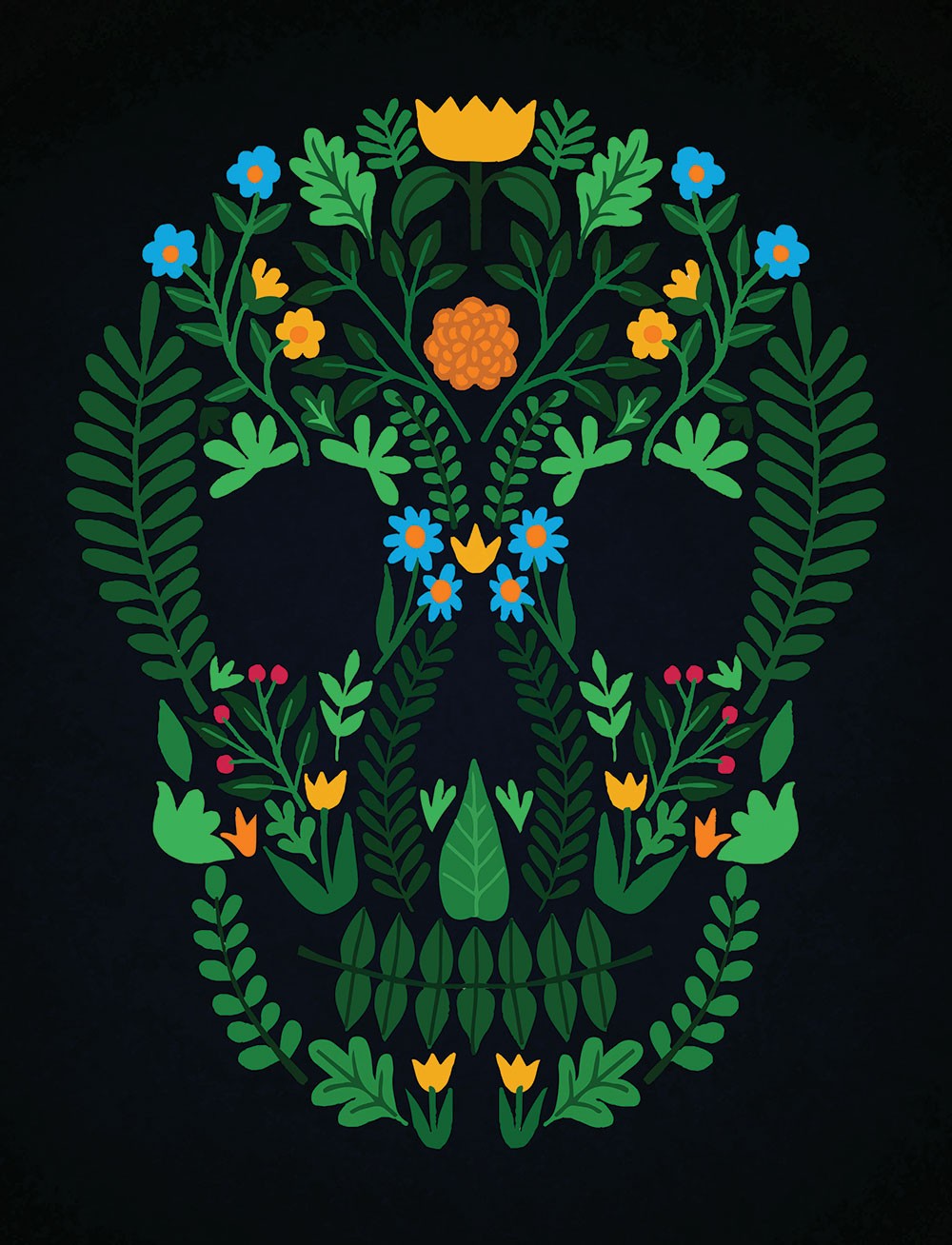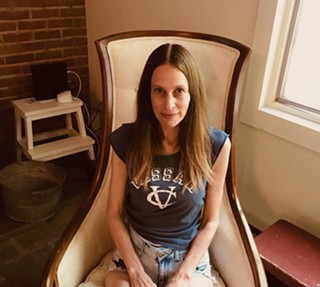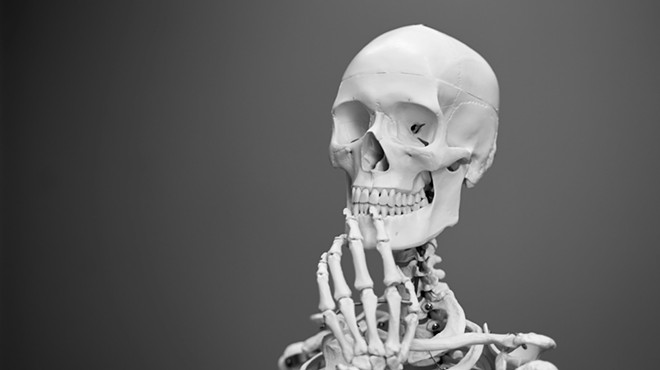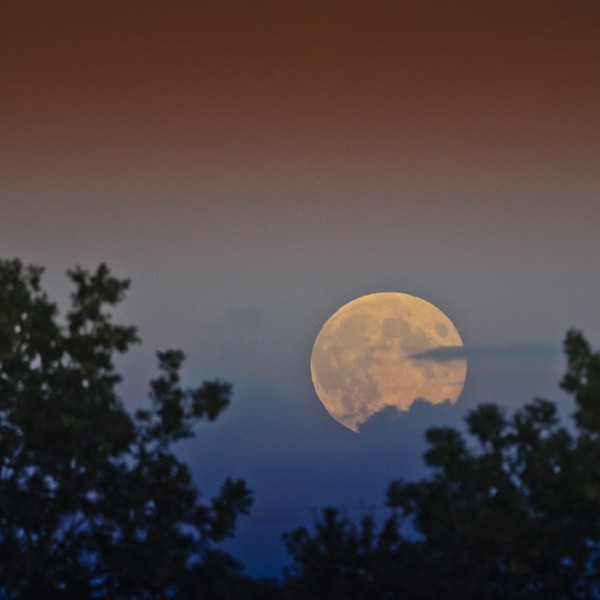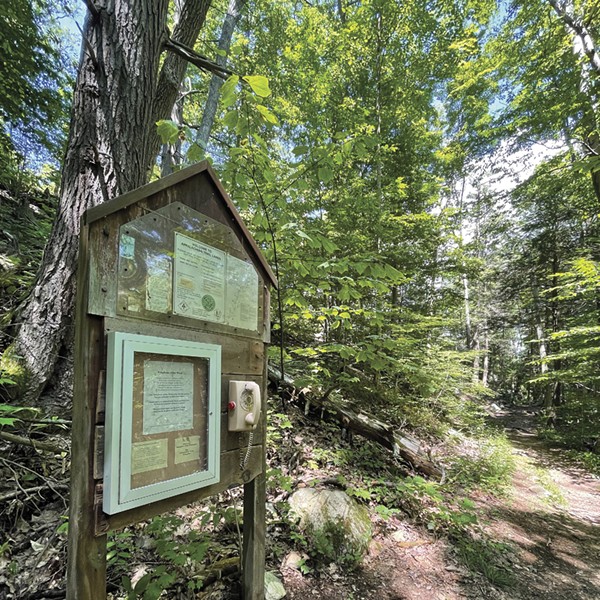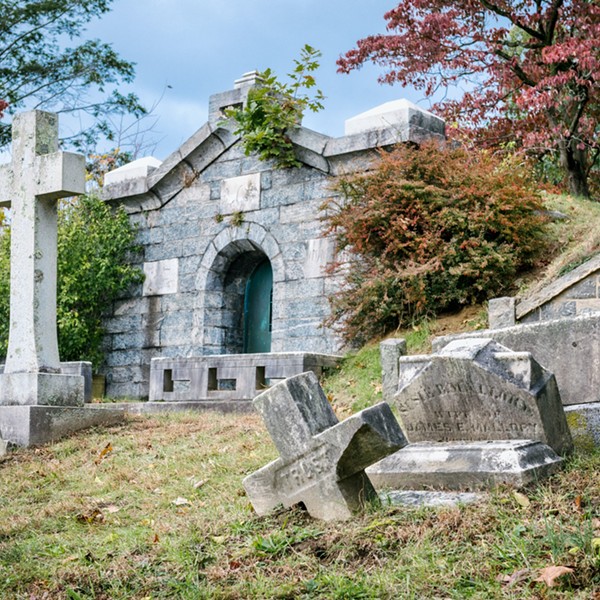In the young hardwood forest that is the Natural Burial Ground in Rhinebeck, Warren Reiss lies buried next to a tree with a hanging vine. Nothing like a conventional cemetery with its manicured plots, Reiss's final resting place is more like Bambi's woods, spiked with ferns and carpeted with moss, the stuff of verdant fairytale. Shortly before his death last May from lung cancer at 61, Reiss chose this last pit stop for himself—and his family carried out his wishes, selecting a spot in the back corner near a beautiful tree, "so my dad, always the life of the party, could look out over everyone," says his daughter Taylor Reiss Gouge. It was a drizzly, cool spring day when his close family and friends lowered him into the ground on a simple wood plank, his body wrapped in muslin and a tattered wool Hudson Bay blanket that had warmed him most of his life. About 50 people gathered in a circle under the trees for an intimate ceremony with music and poetry, laying flowers, stones, and other natural objects into the grave, and placing small candles in a basket of soil at the foot of the site. "The basket ended up catching on fire, which was strangely appropriate since my dad really loved campfires," says Gouge. "He ended up getting one at his grave."
Just five years ago, an organic, free-range burial like this one would not have been possible in the Hudson Valley; the Natural Burial Ground in Rhinebeck, and many other green cemeteries that have sprouted up since, did not yet exist. But the standard American entombment with a treated-wood casket, concrete or asphalt vault, and chemical embalming would hardly have suited Reiss, an environmental lawyer and avid outdoorsman who felt most at home in nature. (Reiss was the general counsel for Scenic Hudson and worked on conservation projects ranging from the Hudson River PCB cleanup to the creation of Poet's Walk Park in Red Hook.) Even cremation, which saves land and is considered the second-most environmentally sound way to dispose of the dead, emits particulates of mercury and carbon dioxide into the atmosphere, spewing out some 600 million pounds of CO2 annually in the US alone. Rhinebeck's Natural Burial Ground came into being in 2014, dovetailing with a growing movement toward "green death"—sustainable solutions that not only reduce our final footprint on this earth but also affirm our connection to nature and our place as living creatures in the cycle of life.
Doing Death Differently
"Green burial, with its focus on conservation, preservation, and restoration of land, is new. These dust-to-dust practices are old," says Suzanne Kelly, the Rhinebeck-based author of Greening Death: Reclaiming Burial Practices and Restoring Our Tie to the Earth (Rowman & Littlefield, 2015) and the chair of Rhinebeck's Natural Burial Ground committee. "Over 150 years ago, this was the way that the majority of our dead were interred." Kelly explains that chemical embalming came into mainstream use during the Civil War, when the bodies of soldiers needed to make their way home before decomposition set in. In the late 1800s, the rise of the sanitation movement literally pushed our cemeteries to the edges of town, as the dead body was seen as a locus of contamination. Yet the raw material of our human form— nitrogen, phosphorous, and calcium—is the very stuff that enriches our soil. There is nothing dirty or polluting about natural burial, except for the good, clean dirt that results from it months later in an act of transformation that is as old as time.
"The development of the funeral industry is the very thing that has enabled us to become as distanced as we are from the process of death care. We've handed our dead over essentially to professionals," says Kelly. Even in Jewish and Muslim funeral practices that hold to natural burial rites, the American way of death still asserts itself through a mandate to use caskets and vaults. "At a conventional burial, typically what happens is you arrive at the cemetery and there's faux draped grass around the hole. You don't see inside the hole at all. There's a lowering device that's set over the hole, and the casket is already there, too, when you arrive because the funeral director has brought it there. You don't see inside the hole at all. It's almost as if you're supposed to forget that the body is really going into the ground."
Kelly's interest in finding alternative ways to bury people was piqued when her own father died in 2000. In the Irish-Catholic style, he was embalmed, laid out in a modern casket, and buried in a small church cemetery. "He had the conventional way out," she says, but the experience got her wondering if there was another way. She Googled "no embalming" and discovered Ramsey Creek in Westminster, South Carolina—the only green burial ground in the US at that time. "I thought, wow, this is really interesting, but that's all there was. I wanted to find other people who were interested in changing our death practices and who wanted to sort of do death differently." As she pursued the topic academically, making it part of the focus of her PhD, Kelly discovered that a community of likeminded people was gaining ground. She found others who wanted to care for the dead with minimal impact to the earth, in a way that did not deny the realities of subsidence. "It's a way of tying the fact of human death to caring for the land, and a way of recognizing that we do indeed belong to the earth—that we do indeed belong to nature."
Rebirth in the City
Green burial grounds in rural settings are growing: Kelly estimates that more than 125 earth-friendly cemeteries of varying styles have opened in the US in the last 15 years. Yet with more than 50 percent of the world's population now living in urban centers, we need solutions for cities, too. That's where Katrina Spade comes in. The founder and designer of the Urban Death Project, based in Seattle, Spade has a plan for a vertical burial system based on the idea of "recomposing" the human body into life-giving soil. The idea came to her around 2010, when having two young children got her thinking about her own mortality, and about how today's funeral practices don't always support us in a holistic way. "I was just not interested in having the last thing I do be toxic to the Earth that supported me my whole life long," says Spade. "I started designing a model for a place that would be right in our city, where the staff would be trained more like death or middle-life celebrants, instead of like funeral directors currently are. We'd give families more participation, not less, over the death care experience."
The idea quickly grew from an alternative funeral home to a full-fledged green burial facility. "A friend of mine called me one day and asked if I'd heard about these farmers and researchers who do livestock composting. It was one of those moments where it just clicked, and I thought, 'What if, in addition to building beautiful spaces where the staff helps families participate, we also designed a main system that would turn bodies into soil after death?'" Spade designed what she calls a recomposition core—a vertical structure at the center of a city building that's two to three stories high and filled with wood chips, which are a main component in livestock composting and can be sustainably sourced from city parks departments. It also lends itself well to a framework for a ritual that has meaning for mourners. "You'd invite friends and family to bring the body to the top of the core, which becomes a kind of journey or procession where you're saying good-bye to the person you've lost. Then friends and family lay the body into the top of the core, and it's a way for the living to participate in the exciting transformation that's about to happen." In the weeks or months that follow, family and friends can return to the site to retrieve compost, which they can either scatter like cremains, or use to plant a tree or a garden.
While still in the prototype stage, the Urban Death Project is taking shape thanks to an Echoing Green Fellowship that Spade received in 2014, a Kickstarter campaign that raised $91,000, and various donations from individuals and foundations. With a growing staff of advisors and researchers, Spade is hoping to kick off a pilot program at Washington State University—and Seattle seems well cast for a flagship facility. "The people here are environmentally minded and progressive," she says. "But even more than that, I think there's an appreciation for things that are a little bit dark, or a little bit different." Long-term, she hopes to take the project to many cities. Public response has been largely positive, bolstered by shifting views about death and a new willingness to face one of our most taboo subjects. "If I had tried to do this project 10 years ago, I'm pretty sure it would have fallen flat on its face," says Spade. "But there's such a wonderful community of people and organizations working toward the same goal, which is more participation, more transparency for consumers, more conversations around death that are honest and open."
A Garden of Possibilities
Indeed, the green burial movement is developing in concert with other death awareness movements that are happening right now—including the rise of death cafés, where people gather over tea and cake to talk about life's final act, and a growing trend toward home funerals, which allow family and friends to take a more active role in caring for the dead and preparing loved ones' bodies for burial. Companies are developing new products such as Coeio's Infinity Burial Suit, which is made out of mushrooms that help detoxify the body as it decomposes, and the Bios Urn, marketed as the world's first biodegradable urn, that's designed to convert your cremains into a tree (you can choose between maple, pine, gingko, beech, and ash).
Yet people like Kelly are wary of commercializing the trend (a mushroom suit will cost you $1,500; the Bios Urn is $145). In her work helping to create Rhinebeck's Natural Burial Ground—which became the second municipal green burial ground in New York State—she received second-level certification for the project from the Green Burial Council, so that people can be assured of what they're getting without being greenwashed. The burial ground abides by certain rules—chiefly, no embalming, no burial vaults, and only burial containers that are biodegradable. Accessible by a carriage road, the 10-acre woods makes for a magical setting for last good-byes, which can take any shape. "Preplanning is key, which means letting your loved ones know what you want. Which is hard for a lot of folks," says Kelly.
"My dad was not a religious person, but you could almost say that nature was his religion," says Gouge about Reiss. "He found peace being among the trees." And he still does.







